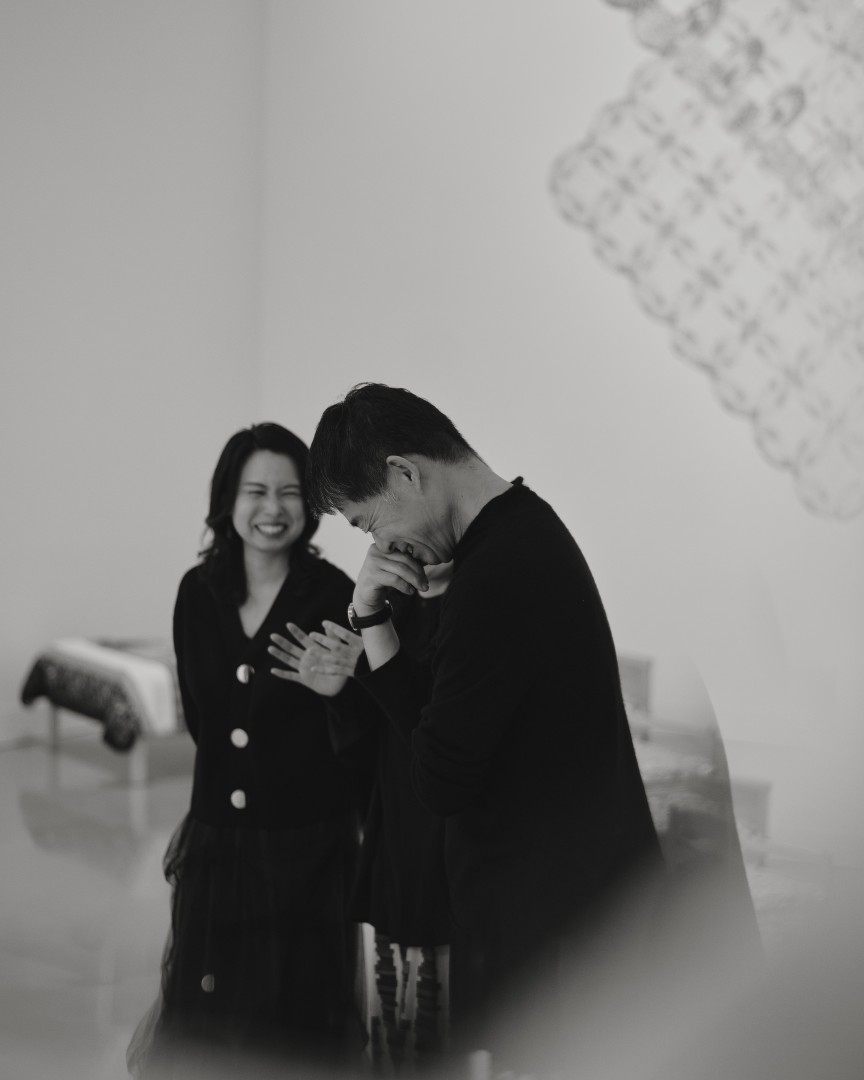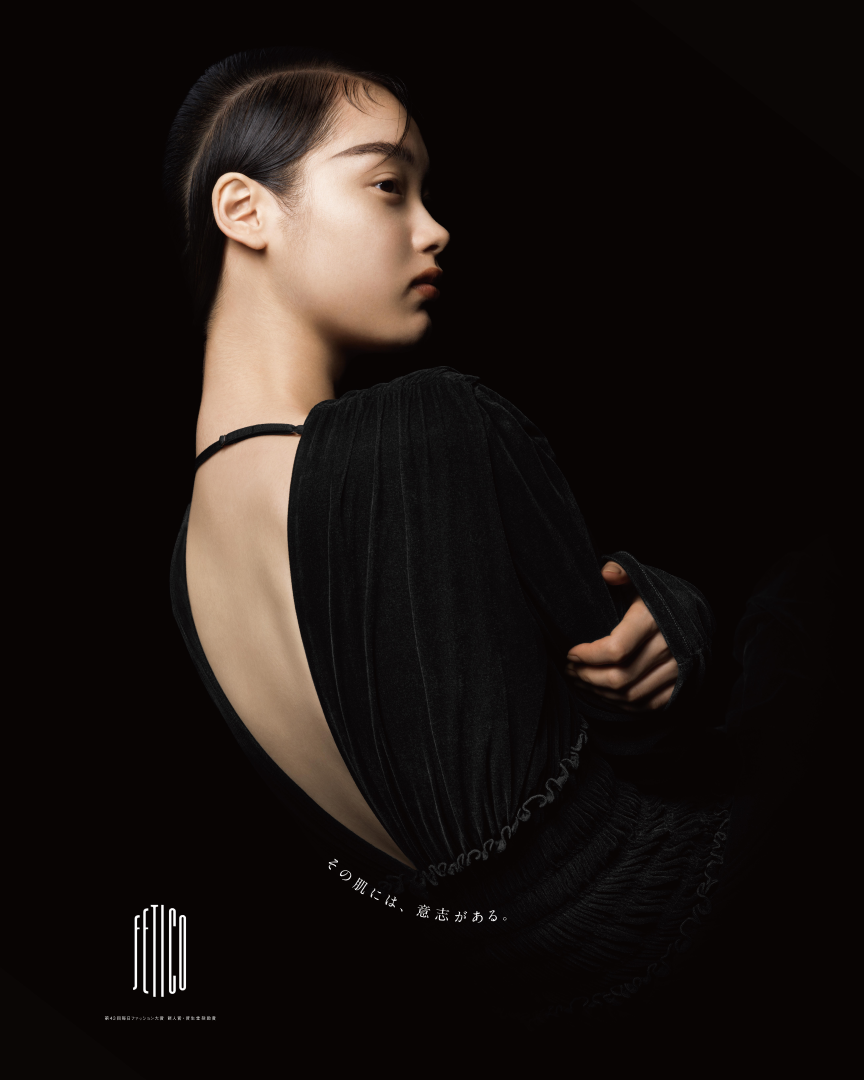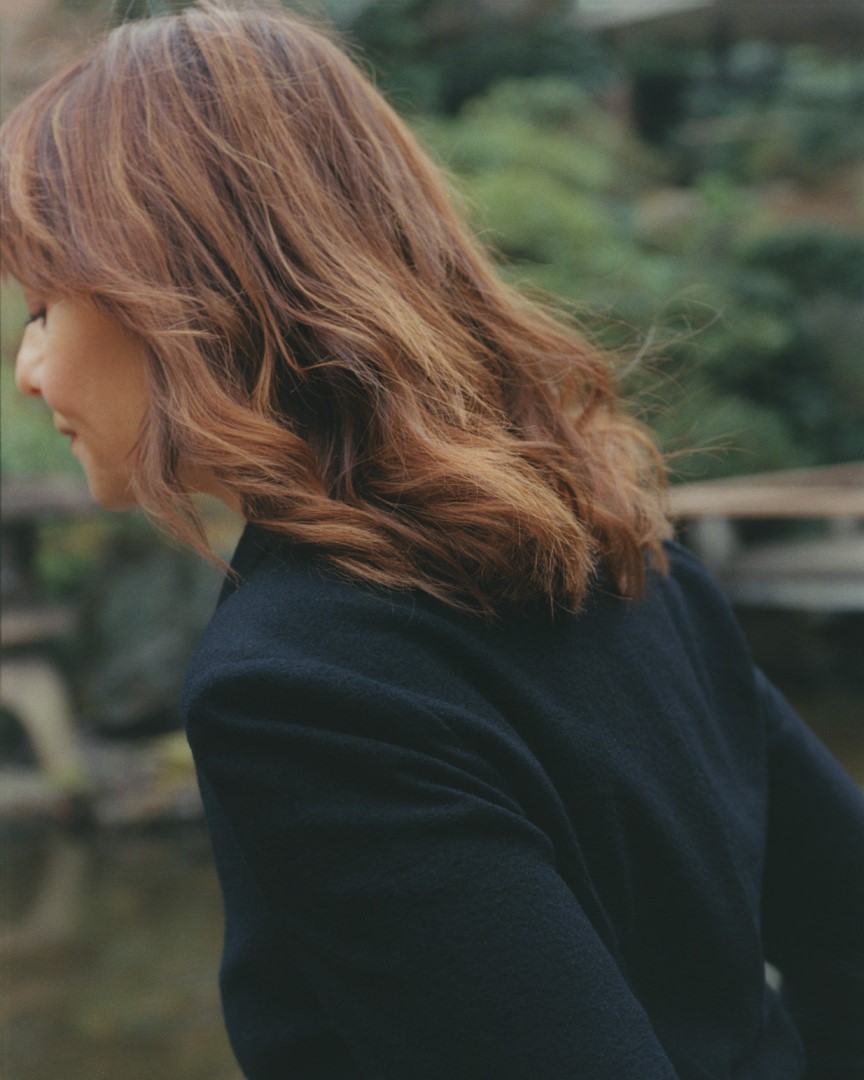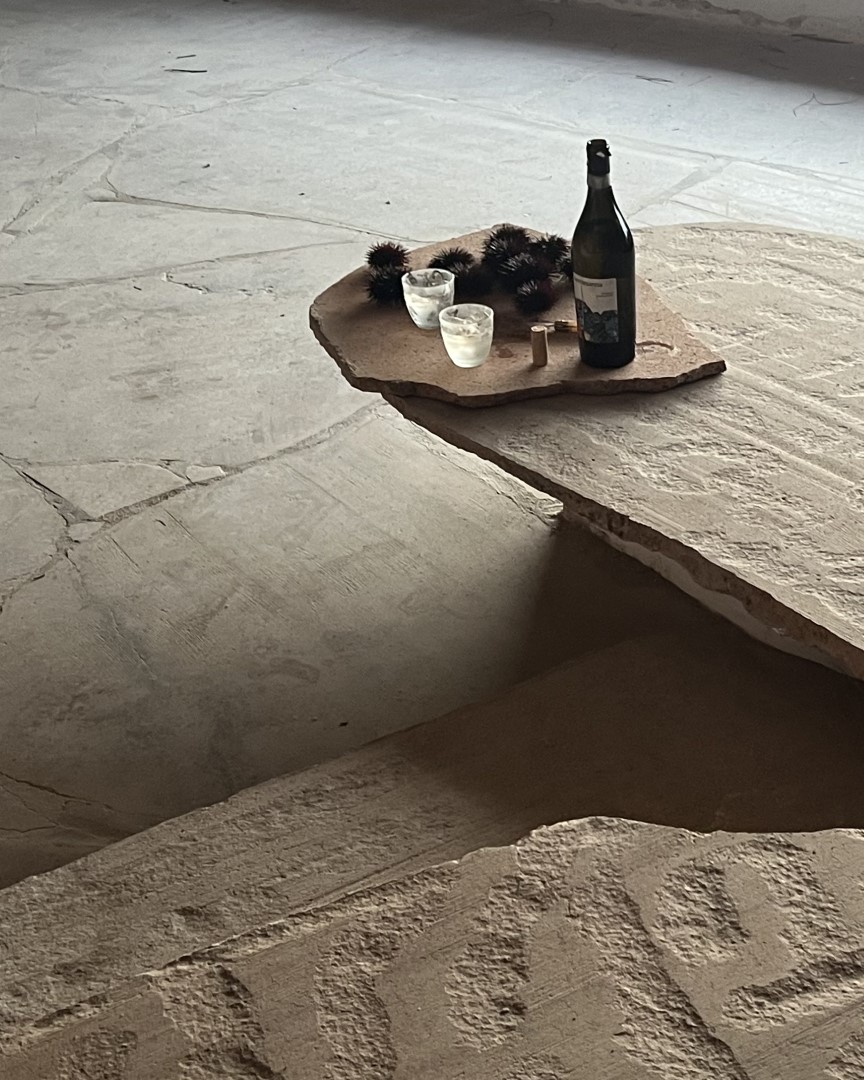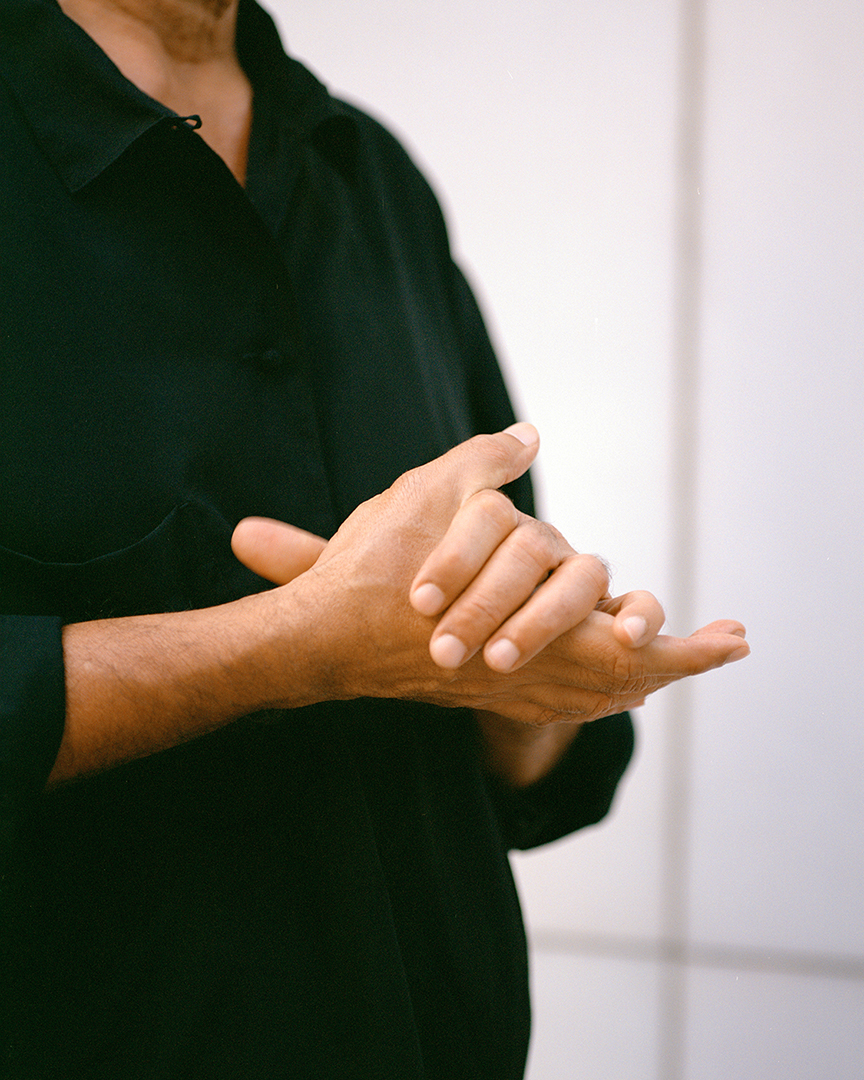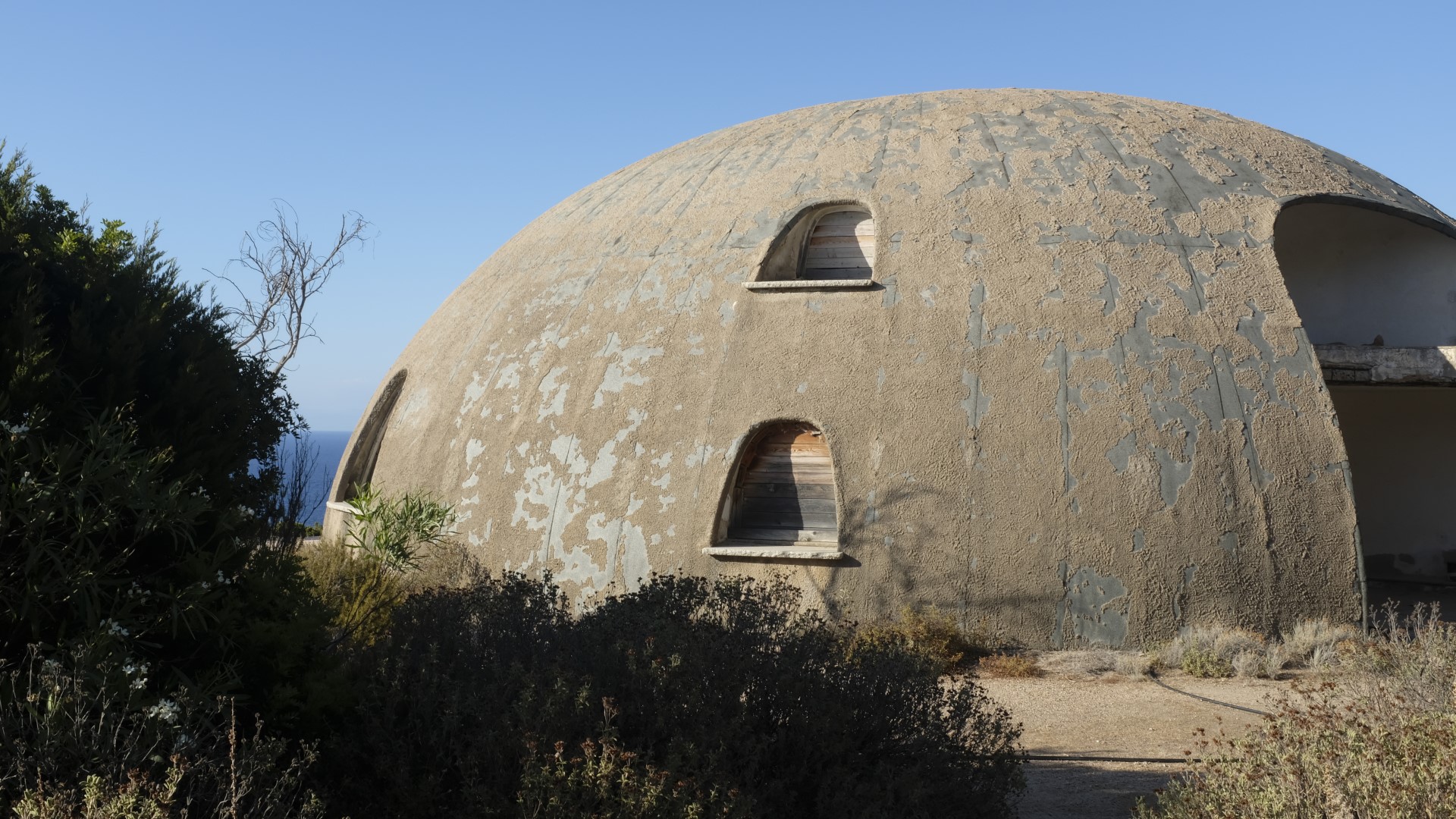
イタリアのサルデーニャ島に1970年代のはじめに建てられた、「La Cupola」。
かつての美しさもなく荒れ果ててしまったその姿に、あるふたりの女性は使命を感じ、立ち上がった。手にはたくさんの掃除用具。何日もかけて、その荒廃した空間を清掃し、そして去っていった――。ふたりは何者で、何を思って行動し、そして何を見つけたのだろうか。
掃除というヴァンダリズム?
イタリア・サルデーニャ、かつては秘境だったコスタ・パラディーゾの崖の上にあるコンクリートのドームは、建築家ダンテ・ビニの設計で、60年代後半、映画監督ミケランジェロ・アントニオーニと当時彼の恋人だった俳優モニカ・ヴィッティの別荘として建てられたものだ。アントニオーニが他界した2007年以降、新たなふたりの個人所有者の意見が食い違い、管理を放棄したことで、約20年間も存続の危機にある。その事態がメディアに取り上げられるようになったのは、ジャーナリスト出身の異才の建築家で知られるレム・コールハースが、「過去100年で最も重要な建築物」として公表したことが大きいだろう。とはいえ、建築家が存命で、まだ50年の歴史しかないという状況下から、イタリアの文化遺産に登録される条件を満たさなかった「La Cupola」は、管理者のいない有名観光地となり、状態は悪化の一途を辿っていた。その誰もが諦めていた荒れ地に、文字通り手を入れたのは、「La Cupola」とは個人的な縁もゆかりもないカミラ・ジネーヴラとアシュリー・ヘルヴェイのふたり。
大学で建築を学び、キュレーター、デザイン・コンサルタントとして働いていたイタリア出身のカミラと、クリエイティブ・ディレクターとして活動するアメリカ出身のアシュリー。ふたりはInstagram を通じてつながり、お互いがマルセイユにいることを知って初めてランチに出かけ、近い理念や価値観、美学を感じ、意気投合。そして、ふたりはイタリア語で裸足を表す「Scalzo」の活動をスタートする。第1弾となったのが、建築物「La Cupola」で行われた、Careを意味する「CURA」と名付けたプロジェクトである。「『La Cupola』は建築好きの間ではもちろん知られていましたが、廃墟としても有名でした。2022年の夏、仕事の撮影でサルデーニャを通りかかったときに立ち寄ってみたら、本当に酷い有様で衝撃を受けたんです。ドアも壊され、誰でも忍び込める状態でした。麻薬の針や酒瓶が散らばっていて、動物の糞だらけで、まさにゴミの山。それで、カミラに連絡したんです」とアシュリーは言う。
連絡を受けたカミラは、すぐさまアシュリーのいるサルデーニャへ向かった。
「建築の傑作があんな状態に置かれているのに、誰も何もしようとしないなんて信じられない!と友人の間で話に上がっていました。いつか何かしようと思ってはいたけれど、何をすればいいのかはわからなくて。でもアシュリーからの声がけで、夜中に船に乗り込みました。到着した私たちがまず最初にしたのは、空間の状況を確認し、スーパーに買い出しへ行くことでした(笑)。掃除用具にゴミ袋、そして真夏で水も出ない場所だったので、大量の飲料水が必要でした」
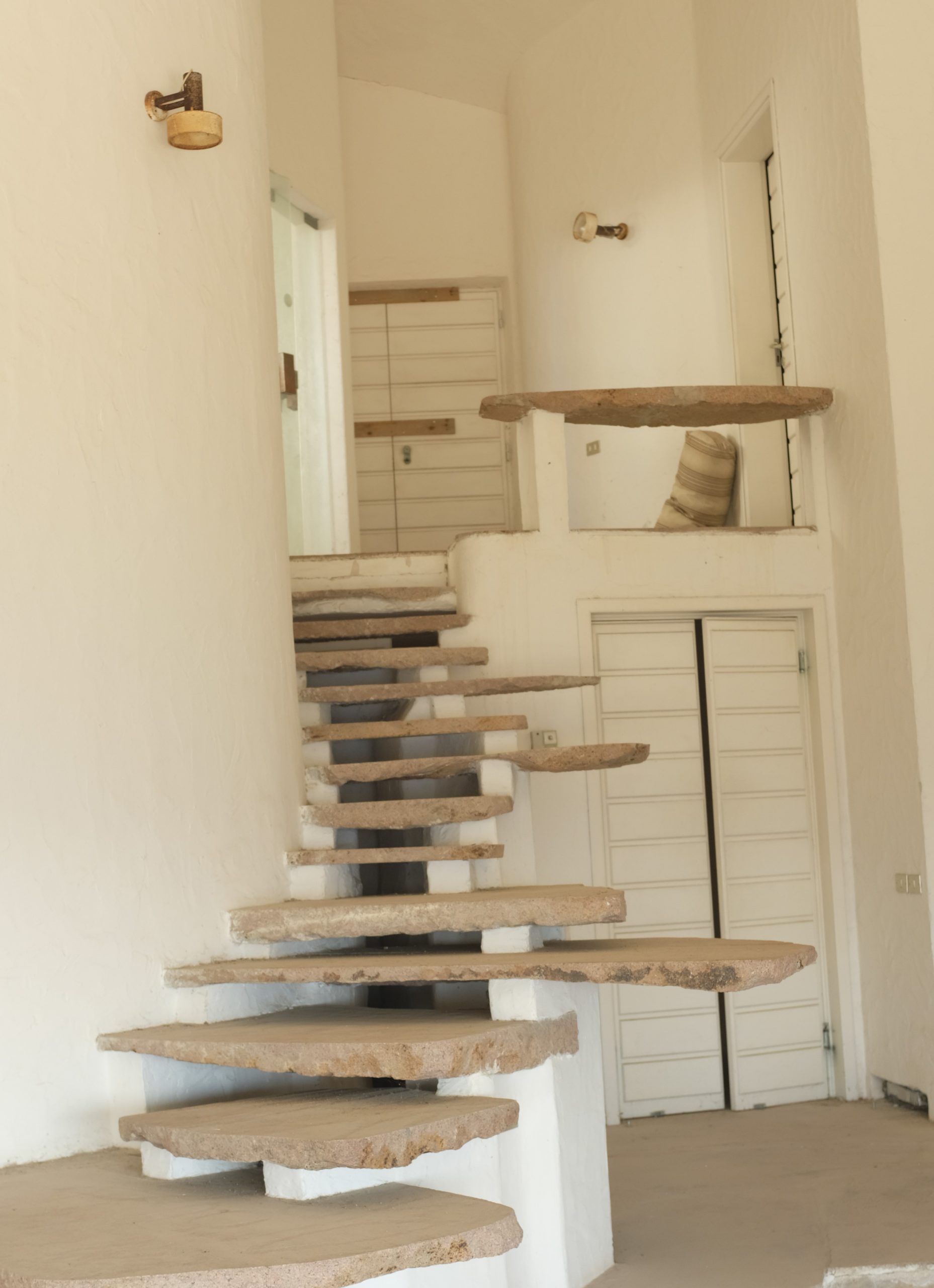
全く計画的でなく、自然発生的な行動だったとふたりは振り返る。しかも正当な理由がない限り、不法侵入は違法行為にもなりえる。初めの数日間は不安を感じ、隠れながら清掃をしていたが、段々とそれが正しいことだと感じ始めたという。
「マットレスと毛布を持参し、ときにイノシシに囲まれながら寝泊まりしました。通常、不法占拠者はその場所を荒らすものですが、私たちは清掃することで場所をよりよくしようとしていたんです。そう思うと、自分たちはここにいていいんだと捉えられるようになりました。必要であれば、なぜそこにいるのかを説明できたので」
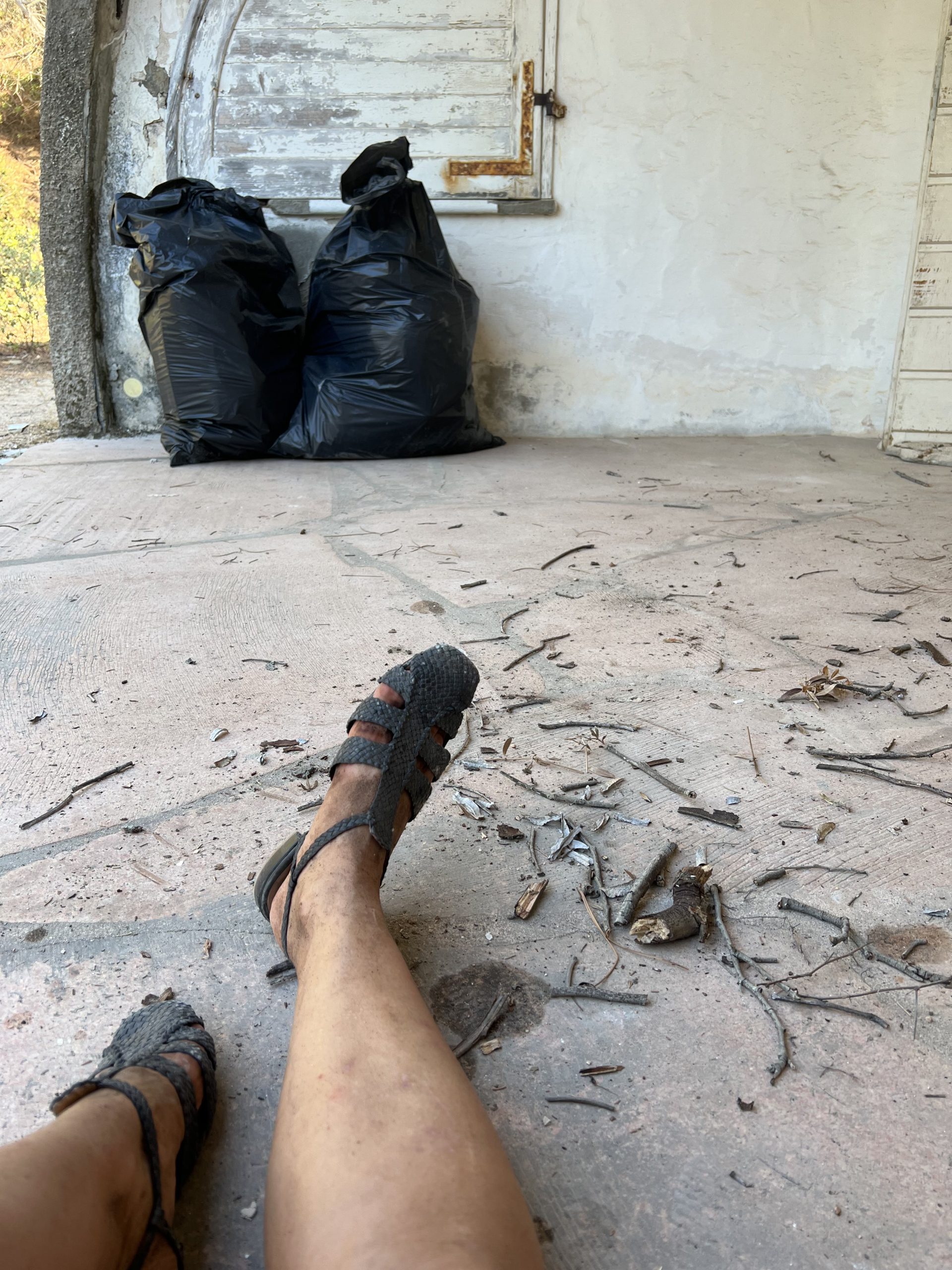
大量のゴミを片付け、汚れを拭き取ってもなかなか終わらない。彼女たちは、船に乗り、裸足で森を通り抜け、約15時間かけて「La Cupola」に通い、数日間宿泊しながら、二度にわたり、計7日間作業を続けた。一度帰るときは、くる者が名前を残せるようにノートを置き、人の気配を残した。掃除をすればするほど、人が住めるなんて信じられなかった空間を心地よく感じている自分たちに気づくことになる。
「不要なものをすべて取り払うという第1段階を終えると、ベッドがあった窓の横に枝を飾り、寝転んで海を眺められるようにしたり、床にあった石を使って棚に置く彫刻をつくったり。といつの間にか空間を自分好みにカスタマイズする余裕が生まれていました。ドキュメンタリー映画にでもしていたら、いい記録になったはずだけど」とカミラは笑う。「本当に残念なことに、最初の酷かった様子をほとんど撮影せずに始めてしまったので、私たちが何をしたのかは記録に残ってないんです」とアシュリーが続ける。
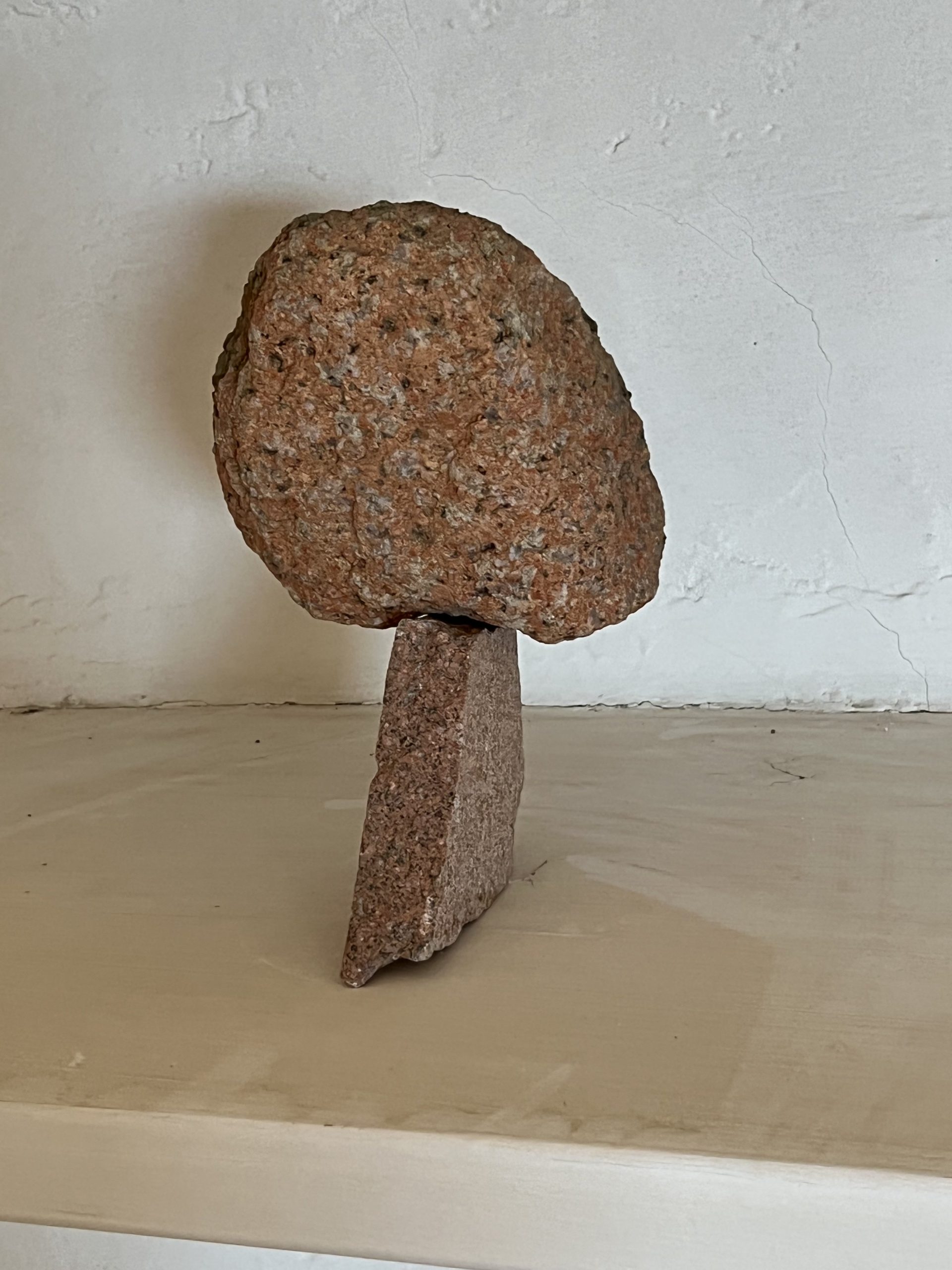
ケアはかたちに残らないもの
気温36度のなか、特に話し合うこともなく、汗を流しながら、ふたりは直感的に黙々と動いた。最初は、人を招いてディナーをし、建築の素晴らしさを祝うようなエンディングを思い描いていたものの、最終的にそれは必要ないと気づく。最後の日、カミラとアシュリーは、ダイビングをして採ったウニを食べながら、ワインを飲み、崖から海を見下ろし、夕日を眺めながらケアを終えた感動を分かち合っていた。カミラは言う。「とてもフィジカルで、意味があることが起きていると思えて感動しました。なぜって、私たちより前にそこへ訪れた100人をこえる人々がやらなかった理由があったはずですから。私たちの努力やエネルギー、手を使って、この場所への愛情を表現できたことは大変だったけれど(笑)、美しい行為だったと思っています」
一番辛かったプロセスを尋ねると、「ドアを閉めてそこから立ち去ること」と答えるほど、カミラとアシュリーはその詩的とも言える活動を献身的に行っていた。その後、フランスに戻ったふたりは、保全のためのフォローアップをすべく、ジャーナリストや編集者、建築関係者らに連絡を取ったが、複雑に権利の絡んだ状況を変えるまでには至らなかったという。「私たちは変化を起こす立場にはいないし、本当に変化を起こすためには、さまざまなスキルをもち、同じ方向を向いて、無償でもやる気がある人たちのグループやコミュニティが必要」とふたりは指摘する。彼女たちのプロジェクトを称えた者も多かったが、利益を生まない行為であることに対し、世間はやや困惑したまなざしを向けてもいた。そんなとき、建築家ダンテ・ビニ本人から、驚きと感謝のメールが届く。そこには、「忘れ去られたLa Cupola の空間でのあなた方の寛大さと鋭い感受性には驚かされ、私の心に深く響きました。……でも、この場所が完全に崩れるまでには、少なくともあと100年は待たなければならないでしょう!」と書かれていたという。自分の生み出した強固な建築を観光し、撮影し、記事を書く人は多くても、実際に手を入れた人はいなかった。そのことが彼を喜ばせたのだ。こうして、「La Cupola」が、彼女たちが進むべき方向を決定づけた。
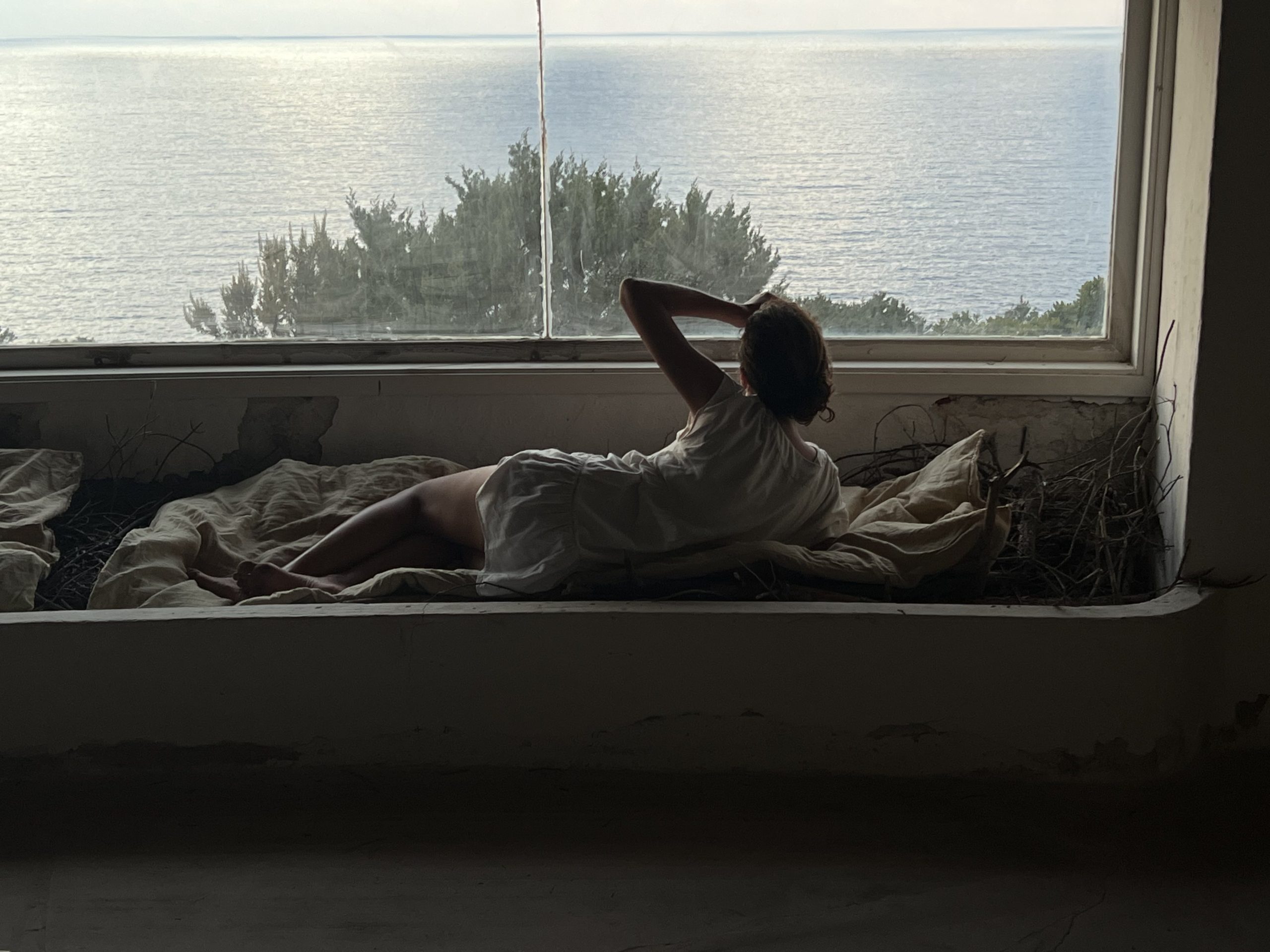
後編につづく
カミラ・ジネーブラ
キュレーター、デザインコンサルタント、アートディレクター。イタリア出身。乗馬をこよなく愛し、彼女のパートナーと2人の息子とともにプロヴァンスで暮らす。アシュリーとScalzoプロジェクトに取り組む。@camillaginevra_
アシュリー・ヘルヴェイ
クリエイティブディレクター。ロサンゼルス出身、パリ在住。ファッション・広告を中心にさまざまなブランドのエディトリアルを手がける。ひとつのテーマに対してひとりの写真家を特集する月刊誌『MONOGRAM』の共同創刊者。@ashleyhelvey
*本記事は『花椿』No.832に掲載しております。
詳細はこちら
La Cupola
Restoration As an Act of Care
Part 1 (From "Hanatsubaki" No.832 "care".)
2025.2.4
Text Tomoko Ogawa
Translation Matt Treyvaud
On the Italian island of Sardinia stands a structure known as La Cupola. When two women saw how deterioration had robbed it of its former beauty, they felt duty-bound to restore it. Rising to the challenge with cleaning implements in hand, they spent days scrubbing and cleaning the ruin—and then vanished.
Who were these two women? What drove them to take action? What did they discover when they did?
Cleaning as Vandalism?
La Cupola is a concrete dome standing on the cliffs at the Costa Paradiso, a formerly off-the-beaten-track area on the Italian island of Sardinia. It was built in the late 1960s by architect Dante Bini as a holiday home for director Michelangelo Antonioni and his lover at the time, actress Monica Vitti. After Antonioni’s death in 2007, the dome’s two new owners had a falling out that resulted in the structure going without maintenance for nearly twenty years, imperilling its very existence. All this came to the media’s attention after Rem Koolhaas, an architect of rare genius and a former journalist himself, publicly declared the structure one of the most significant expressions of residential architecture in the past hundred years. Even with this endorsement, La Cupola did not qualify for inclusion on the Italian heritage list: Its architect is still alive and it has only fifty years of history. Without proper management, the site became a popular tourist destination, and its condition continued to deteriorate—until two women literally rolled up their sleeves and got to work caring for the abandoned structure everyone else had given up on. Their names were Camilla Ginevra and Ashley Helvey, and neither had any existing personal connection to La Cupola.
Italian-born Camilla, who studied architecture at university, was working as a curator and design consultant at the time, while Ashley was a creative director from the US. The two became acquainted through Instagram, and went out for their lunch together after realizing they were both in Marseilles. They established an immediate rapport, recognizing each other as kindred spirits in terms of principles, values, and aesthetics. In no time the two began their activities as Scalzo, a word meaning “barefoot” in Italian. Scalzo’s first initiative: Project Cura (“care” in Italian) at La Cupola.
“La Cupola was known to architecture buffs, of course, but it was famous as a ruin,” says Ashley. “When I made a detour to the site while travelling nearby for a shoot in the summer of 2022, I was shocked by how truly wretched its condition was. The doors were broken so that anyone could have sneaked in. There were needles and bottles all around and animal dung everywhere—it was a rubbish heap. So I contacted Camilla.”
Camilla immediately went to join Ashley on Sardinia.
“My friends and I couldn’t believe it. An architectural masterpiece in a state like that, and no one was taking action! I was hoping to do something myself one day, but I didn’t know what that should be. When Ashley contacted me, I hopped on a boat in the middle of the night. After examining the conditions on-site, we started by visiting the supermarket for supplies! We needed cleaning tools,garbage bags, and—because it was midsummer and there was no running water there—a lot of fluids.”
Both women recall their actions as completely unplanned and spontaneous. What’s more, entering the property without a valid reason could have been illegal trespassing. For the first few days they felt uneasy and tried to stay out of sight as they cleaned. Eventually, though, they started to feel that they were doing the right thing.
“Camilla and I brought our own mattresses and blankets, and sometimes slept surrounded by boars,” says Ashley. “Squatters normally destroy the place they inhabit, but we were trying to improve it with our cleaning. When we thought of it that way, we started to feel that it was okay for us to be there. We could have explained what we were doing there if necessary.”
Even after clearing away mounds of rubbish and scrubbing off layers of grime, the work was far from complete. In the end, Camilla and Ashley spent a total of seven days at La Cupola, divided between two visits in which they reached the site via fifteen-hour boat journey followed by a barefoot run through the forest. When returning from their first visit, they left a notebook so that visitors could record their names, indicating a human presence. The more they cleaned the space that had initially seemed unsuited to human habitation, the more pleasant it became.
“Once we finished the first stage of removing everything unnecessary, we decorated the area by the window where the beds used to be with branches so we could lie down and gaze at the sea, and used stones left scattered on the floor to create sculptures to place on the shelves. We realized that we now had the spare time to customize the space to our liking. If only we’d been making a documentary—it would have been a good record,” laughs Camilla.
“It’s a real shame that we didn’t shoot the site in its original ruined state before starting our work,” adds Ashley. “There’s no record of what we did now.”
Care Leaves No Trace
Sweating in temperatures reaching 36°C, Camilla and Ashley worked intuitively and in silence, with no discussion needed. They had originally envisaged concluding their project with a dinner party to which they would invite guests to celebrate the wonder of the architecture with them, but in the end they realized that would be superfluous. On the last day, the two women ate sea urchin they had dived for themselves, drank wine, looked down at the sea from the cliff, and, as they gazed at the sunset, shared a powerful sense of fulfillment from having finished their act of care.
“It was very physical, and I found it moving to consider that something meaningful was ,” says Camilla. “More than a hundred people had visited before us, and none of them did what we did—there must be a reason for that. Using our efforts, our energies, and our hands to express our affection for this place wasn’t easy, but I think it was a beautiful act.”
Camilla and Ashley performed their work—which could even be called poetic—with such devotion that, when I ask what the hardest part was, they answer, “Closing the door and walking away.” After returning to France, the two of them contacted journalists and architectural experts in an attempt to follow up on their act of preservation, but the complicated tangle of rights involved proved insurmountable.
“We aren’t in a position to effect change. To do that properly, we’d need a group or community of people with various skills who are all oriented toward the same goal and will work with enthusiasm even unpaid.” Many observers praised their endeavour, but the world at large was unsure what to make of something with no hope of profit. Then a surprised but appreciative email from architect Dante Bini arrived. “You surprised me! Your generosity and epidermal sensibility in the forgotten empty space of La Cupola touched me intimately…. But in order for the space to collapse they will have to wait at least another 100 years!,” it read. Though many people had toured, photographed, and written articles about the sturdy structure he designed, he said, none had ever thought to care for it. He was delighted by Camilla and Ashley’s efforts had delighted him. And so events at La Cupola decided the path the two would tread in future.
Camilla Ginevra is a curator, design consultant, and art director from Italy. A passionate horse rider, she lives in Provence with her partner and their two sons. She is currently working on the Scalzo project in collaboration with Ashley Helvey. @camillaginevra_
Ashley Helvey is a creative director from the USA, now based in Paris. She has led editorial projects for numerous brands, mainly within the fashion and advertising industries. She co-founded the monthly magazine MONOGRAM, which highlights one photographer per issue. @ashleyhelvey

